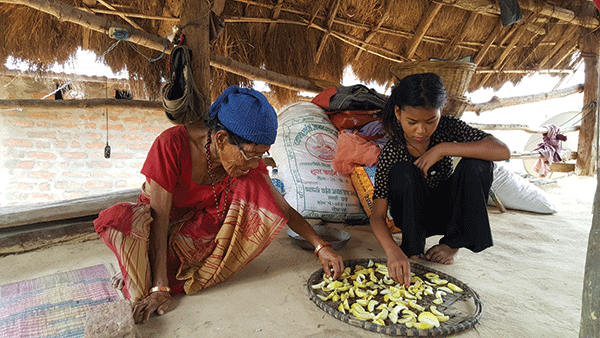Nepal and Nepalis get space in the international me dia for some of the most unique reasons. The sac rifice (bali) of goats under the nose of the Boeing 777 at Kathmandu’s airport was the most recent of these. It is obvious from the incident that Nepalis are still looking for scapegoats literally and figuratively to explain our numerous challenges and failures. It is also very difficult to understand why some animals like the cow are not only worshipped but even their dung is regarded sacred, while others like buffaloes and goats are sacrificed without even blinking an eye. Was it abundance of some species and scarcity of another that led to this behavior?
During the festival of Tihar or Dipawali, we observe crows’ day, dogs’ day and cows’ day. At other times we have snakes’ day (Naga Panchami). At the same time in the popular paintings depicting the kala chakra or wheel of life and time, the snake symbolizes ego or arrogance, the pig stands for ignorance and the rooster represents greed and selfishness. Were they just random choices of artists or was there something more substantive? Many Buddhist homes in Kathmandu will not allow slaughter of chicken because it is said that the chicken helped prevent the cut on the Buddha’s toe from getting infected while he was in deep meditation.
Some years ago, I had taken a group of foreign visitors to Dakshinkali at the southern end of the valley, where animals are sacrificed each Saturday. After seeing the slaughter and blood, they had a simple question, “If this is your religion. What does your sin look like?”
There are many who justify animal and bird sacrifices by saying young people need to grow up feeling “comfortable” with blood. It helps us prepare for violence, bloodshed and ultimately death. Another argument put forth by ecologists is that male goats, sheep duck or chicken need to be killed annually in order to maintain a balance in nature. When there are no natural predators to help maintain the numbers, humans have to step in. The same argument has been put forth to manage protected areas where male population of elephants and rhinos are a challenge beyond a certain number. International conferences on wildlife management have culling and even trophy hunting on the agenda these days.
In Nepal, the gods can be vegetarian and/or non-vegetarian. For example, one can see animal and bird sacrifices at the Ganesh temples in Kathmandu valley. In the tarai, radish or fruits are used to symbolize sacrifice at Ganesh temples. Families in Kathmandu who do not like to shed blood, take a middle way by sacrificing duck eggs at their temples.
During Dashain, numerous animals will be sacrificed in front of machines and vehicles in order to pray for the prevention of accidents during the upcoming year. On the tenth day (Dashain) we see few vehicles on the streets because each one has been “appeased” with the blood of goats, chicken, ducks and even buffalos so that they do not “seek human blood”. It just so happened that Dashain came early at the national flag carrier! People are still wondering how the long Khukuri (knife) got past security.
Animal and human sacrifices are captured in all forms of art in the Kathmandu valley. One of the most common depictions can be seen on the toran (tympanum) and shows Bhagwati (female deity) killing a buffalo (mesh or mysasoor) symbolizing the victory of good over evil. Again women are good and buffaloes are bad. In paintings of Kali and Bajrayogini, we see them bedecked with a garland of human heads. A closer look and you can see that they are stepping on “pleading” humans or their dead bodies.
At Lumbini, the birthplace of the Buddha, Mauryan Emperor Ashoka has left a stone marker, which mentions the word Bali. Historians have been arguing for a long time as to whether the word means sacrifice or tax. The last sentence on the pillars is generally interpreted to mean that the ruler Ashoka reduced the taxes on the local people at Lumbini to one-eighth the normal rates in the 3rd century B.C.E. Today we can all agree that there is really no difference between taxes and sacrifice, it is just a matter of semantics.











